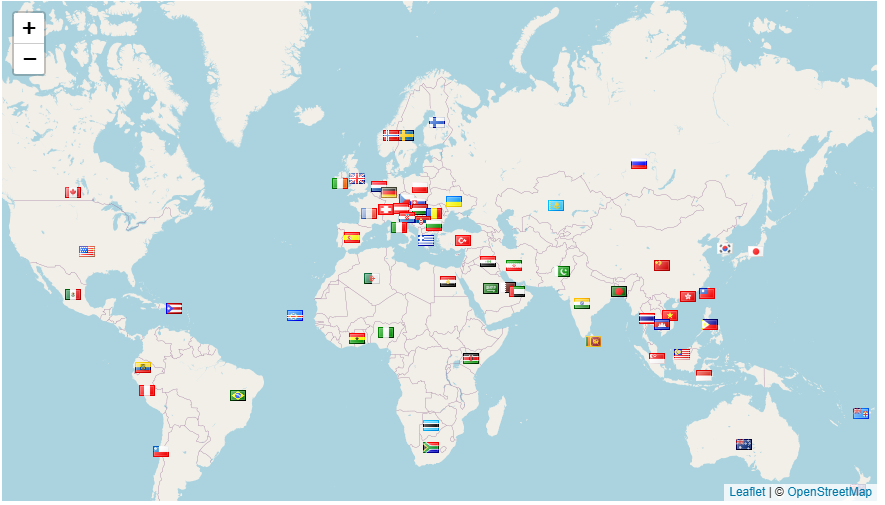Effect of Increased Molecular Force Attraction of NiO (Nickel Oxide) on the Kinetic and Potential Energy of H2O Molecules for Efficient H2O Splitting into H2 Gas
DOI:
https://doi.org/10.70822/journalofevrmata.vi.33Keywords:
chemical characteristics, nickel oxide, non-polar, water splittingAbstract
Nickel oxide (NiO) is a material used due to its remarkable chemical stability, magnetic properties, and electrical characteristics molecules. One notable feature of NiO is its unreactive surface with water (H2O), making it an ideal candidate for use as a cathode in the electrolysis process to produce hydrogen (H2) gas. During electrolyte process, H2 is produced through the oxidation reaction at the anode and the reduction reaction at the cathode. Despite its potential, the detailed mechanism of H2O molecule decomposition using a NiO electrode remains inadequately explained. This research aims to elucidate the increased energy arising from the attractive forces between NiO and H2O molecules. To investigate these attractive forces, simulations were conducted to understand the chemical characteristics of the molecules, including bond lengths, bond angles, and their properties. The results indicated that the use of NiO electrode could increase the potential and kinetic energy of H2O molecules. This energy increase is attributed to the formation of specific polar and non-polar bonds. Specifically, polar bonds were formed between (1) the nickel (Ni) atom in NiO molecules and the oxygen (O) atom in the H2O molecules and (2) the O atom in NiO molecules and the H atom in the H2O molecules. Non-polar bonds were formed between (1) the H atom in the H2O molecules and the Ni atom in NiO molecules, and (2) the O atom in NiO molecules and the O atom in H2O molecules. This study highlights how these interactions help in the electrolysis process by enabling the efficient breakdown of water molecules and the production of hydrogen gas
References
“Hydrogen on the rise,” Nat. Energy, vol. 1, no. 8, p. 16127, 2016, doi: 10.1038/nenergy.2016.127.
A. S. Altowyan, M. Shaban, K. Abdelkarem, and A. M. El Sayed, “The Influence of Electrode Thickness on the Structure and Water Splitting Performance of Iridium Oxide Nanostructured Films,” pp. 1–13, 2022.
I. Maria, C. Ienas, P. Sfirloaga, and C. Adina, “applied sciences New PVP – Ag or Pd-Doped Perovskite Oxide Hybrid Structures for Water Splitting Electrocatalysis,” 2024.
J. He, T. Qian, C. Cai, X. Xiang, S. Li, and X. Zu, “Nickel-Based Selenides with a Fractal Structure as an Excellent Bifunctional Electrocatalyst for Water Splitting,” pp. 1–11, 2022.
U. Rashid, Y. Zhu, C. Cao, and G. Applications, “Pr rin t n ot pe er r ev Pr ep rin t n er ed”.
I. Roger, M. A. Shipman, and M. D. Symes, “Earth-abundant catalysts for electrochemical and photoelectrochemical water splitting,” Nat. Rev. Chem., vol. 1, 2017, doi: 10.1038/s41570-016-0003.
H. B. K and M. Foroutan, “Water distribution in layers of an aqueous fi lm on the titanium dioxide surface : A molecular dynamic simulation approach,” J. Mol. Liq., vol. 244, pp. 291–300, 2017, doi: 10.1016/j.molliq.2017.09.020.
M. B. Hugenschmidt, L. Gamble, and C. T. Campbell, “The interaction of H,O with a TiO,( 110) surface,” vol. 6028, no. 93, 1994.
K. He and L. Guo, “ScienceDirect NiS modified CdS pyramids with stacking fault structures : Highly efficient and stable photocatalysts for hydrogen production from water,” Int. J. Hydrogen Energy, vol. 42, no. 38, pp. 23995–24005, 2017, doi: 10.1016/j.ijhydene.2017.06.234.
O. Bjo et al., “Water at Interfaces,” 2016, doi: 10.1021/acs.chemrev.6b00045.
Y. Yang, M. Luo, W. Zhang, Y. Sun, X. Chen, and S. Guo, “Metal Surface and Interface Energy Electrocatalysis : Fundamentals , Performance Engineering , and Opportunities,” CHEMPR, vol. 4, no. 9, pp. 2054–2083, 2018, doi: 10.1016/j.chempr.2018.05.019.
F. Zaera, “Surface chemistry at the liquid / solid interface,” Surf. Sci., vol. 605, no. 13–14, pp. 1141–1145, 2011, doi: 10.1016/j.susc.2011.04.021.
B. Hess, S.- Uppsala, and E. Lindahl, “GROMACS 4 : Algorithms for Highly Efficient , Load-Balanced , and Scalable Molecular Simulation,” pp. 435–447, 2008, doi: 10.1021/ct700301q.
A. Groß and S. Sakong, “Ab Initio Simulations of Water / Metal Interfaces,” 2022, doi: 10.1021/acs.chemrev.1c00679.
Z. O. Repository, J. Article, and P. Version, “Determining Potentials of Zero Charge of Metal Electrodes versus the Standard Hydrogen Electrode from Density-Functional-Theory-Based Molecular Dynamics,” vol. 119, 2017, doi: 10.1103/PhysRevLett.119.016801.
W. Xu, Z. Lu, X. Sun, L. Jiang, and X. Duan, “Superwetting Electrodes for Gas-Involving Electrocatalysis,” 2018, doi: 10.1021/acs.accounts.8b00070.
S. Ebru and A. Ekicibil, “Investigation of optical , electronic , and magnetic properties of p-type NiO thin film on different substrates,” vol. 732, no. June, 2021.
S. Alavi, R. Susilo, J. A. Ripmeester, S. Alavi, R. Susilo, and J. A. Ripmeester, “Linking microscopic guest properties to macroscopic observables in clathrate hydrates : Guest-host hydrogen bonding Linking microscopic guest properties to macroscopic observables in clathrate hydrates : Guest-host hydrogen bonding,” vol. 174501, no. 2009, 2014, doi: 10.1063/1.3124187.
J. R. D. E. Laeter, H. Hidaka, H. S. Peiser, K. J. R. Rosman, and P. D. P. Taylor, “COMMISSION ON ATOMIC WEIGHTS AND ISOTOPIC ABUNDANCES * ATOMIC WEIGHTS OF THE ELEMENTS : REVIEW 2000 ( IUPAC Technical Report ) Atomic weights of the elements : Review 2000 ( IUPAC Technical Report ),” vol. 75, no. 6, pp. 683–800, 2003.
F. Che, J. T. Gray, S. Ha, N. Kruse, and S. L. Scott, “Elucidating the Roles of Electric Fields in Catalysis : A Perspective,” 2018, doi: 10.1021/acscatal.7b02899.
A. H. Muenter, J. L. Dezwaan, and G. M. Nathanson, “Collisions of DCl with Pure and Salty Glycerol : Enhancement of Interfacial D f H Exchange by Dissolved NaI,” pp. 4881–4891, 2006.
Z. Yu and R. R. Frontiera, “Intermolecular Forces Dictate Vibrational Energy Transfer in Plasmonic–Molecule Systems,” 2022.
S. Vyazovkin, “Kissinger Method in Kinetics of Materials : Things to,” 2020.
S. Zhu et al., “platinum,” Nat. Catal., vol. 4, no. August, 2021, doi: 10.1038/s41929-021-00663-5.
S. Shaik, D. Danovich, B. Silvi, D. L. Lauvergnat, and P. C. Hiberty, “Charge-Shift Bonding — A Class of Electron-Pair Bonds That Emerges from Valence Bond Theory and Is Supported by the Electron Localization Function Approach,” no. Fig. 1, pp. 6358–6371, 2005, doi: 10.1002/chem.200500265.
D. B. Kokh, B. Doser, S. Richter, F. Ormersbach, and X. Cheng, “A Workflow for Exploring Ligand Dissociation from a Macromolecule : Efficient Random Acceleration Molecular Dynamics Simulation and Interaction Fingerprints Analysis of Ligand Trajectories .”.
P. Wang et al., “Molecular dynamics simulation study on interfacial shear strength between calcium-silicate-hydrate and polymer fibers,” Constr. Build. Mater., vol. 257, p. 119557, 2020, doi: 10.1016/j.conbuildmat.2020.119557.
F. Matta and R. F. W. Bader, “Hydrogen ± Hydrogen Bonding : A Stabilizing Interaction in Molecules and Crystals,” 2003, doi: 10.1002/chem.200204626.
G. B. Bacskay and S. Nordholm, “Covalent bonding: The fundamental role of the kinetic energy,” J. Phys. Chem. A, vol. 117, no. 33, pp. 7946–7958, 2013, doi: 10.1021/jp403284g.
J. Huang, N. Zhu, T. Yang, T. Zhang, and P. Wu, “Biosensors and Bioelectronics Nickel oxide and carbon nanotube composite ( NiO / CNT ) as a novel cathode non-precious metal catalyst in microbial fuel cells,” Biosens. Bioelectron., vol. 72, pp. 332–339, 2015, doi: 10.1016/j.bios.2015.05.035.
Downloads
Published
Issue
Section
License
Copyright (c) 2024 Achmad Walid, Haris Puspito Buwono, Lisa Agustryana, Nurhadi

This work is licensed under a Creative Commons Attribution 4.0 International License.







